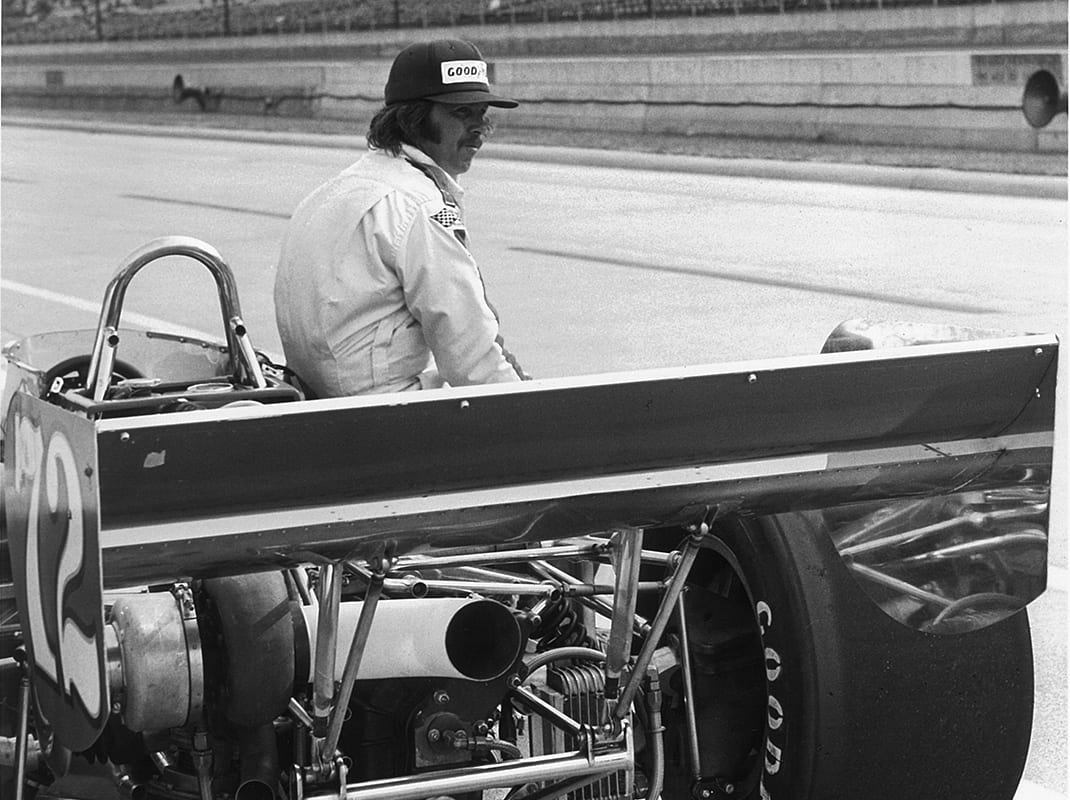EDITOR’S NOTE: Tim Coffeen’s racing life has taken him from Indiana bullrings, where he watched, worked on, and briefly drove sprint cars, to every Indy car venue of consequence during his decades as a mechanic. Coffeen turned wrenches for stars like Mario and Michael Andretti, Gary Bettenhausen, Gordon Johncock and Cristiano da Matta, and is certainly the only mechanic ever to have worked with both Jan Opperman and Nigel Mansell. Helping make all of that possible was his working relationship and personal friendship with National Sprint Car Hall of Fame driver Bubby Jones, who died in January. Read part one by clicking here.
REPLACING OPP
Opperman had been critically injured in the 1976 Hoosier Hundred, when he and Bobby Hillin’s Longhorn Racing No. 12 were caught up in a multi-car wreck. In March of ’77, Opp attempted to make his comeback at Indiana’s Salem Speedway, but it was clear that he wasn’t ready. Jan had been staying at my family’s home in Indianapolis and the day after Salem, I drove him to the Longhorn shop, where he asked that Hillin replace him with his friend Bubby Jones.
Hillin agreed and Bubby moved to Indianapolis.
One afternoon the phone rang, and it was Jones. He asked if I would drive him over to Danville, so he could pick up some of his furniture. My ’66 Ford Galaxie wagon was an old rattle trap, but it had a good eight-track stereo. I picked up Bubby and we headed west on I-74. A few miles into the trip, I plugged in a tape; it was the “Aqualung” album, by the British group Jethro Tull, and the song that came on was “Locomotive Breath,” a real rocker.
Bub listened for about 30 seconds, with a bewildered look on his face. Finally, he said: “That shit don’t fly, hippie. Turn it off.”
So much for converting Jones into a rock-and-roller.
Right out of the gate with the Hillin team, Bub won an Eldora feature, surprising Bruce Walkup with a last-lap slider. And though he lacked experience on asphalt, Jones quickly became competitive with Longhorn’s ex-A.J. Foyt car, a Steve Stapp spring-front chassis.
MAY
By now it was May and the Indianapolis 500 had everyone’s attention. Hillin owned two Indy cars. He told Bubby that if his lead driver, George Snider, qualified Longhorn’s Wildcat on the first weekend of time trials, the team would put together its five-year-old Eagle so Jones could take his rookie test and try to qualify on the second weekend. Snider did his part and qualified 13th.

The next day, Bubby called me. He said, “Get your ass over to the speedway. We got work to do.”
The rookie test consisted of four 10-lap phases, with each phase run at a higher speed. Back then, a driver was only allowed to complete two phases per day, to slowly get him up to speed. But these tests had to be completed by Wednesday of each week, because USAC didn’t want slower cars on the track in the final practice days before qualifying.
Jones began his test on Tuesday, but disaster struck immediately: seven laps into his first phase, the engine blew. By the letter of the rules, his chance to make the 500 was over. But USAC officials offered Hillin a rare reprieve: In light of his rookie’s mechanical trouble, they would allow Jones to finish his test on Wednesday, if the car was ready.
Chief mechanic Donnie Ray Everett burned the midnight oil and the team installed a fresh Offy the next morning. Bubby completed the remaining 33 laps of his rookie test that day and watching him peel the traditional “rookie stripes” from the car’s rear wing was a great feeling.
Over the next few days, Jones got better acquainted with the car, but the Eagle’s lap times were not promising. As always, there was speculation throughout Gasoline Alley about what speed it would take to make the race. In those days, each car was allowed three attempts to qualify; after that, the entry was scratched.
Come the weekend, the Longhorn team waved off Bubby’s first two attempts; the speed just wasn’t there. Now Ol’ Bub was down to his last strike and the team figured that he needed to pick up at least half a mph to make the show. Things were not looking good.
But on his final attempt, Jones found something. His speed climbed with each lap and he bumped his way into the field with a 10-mile average of 184.938 mph.
Click below to keep reading.
